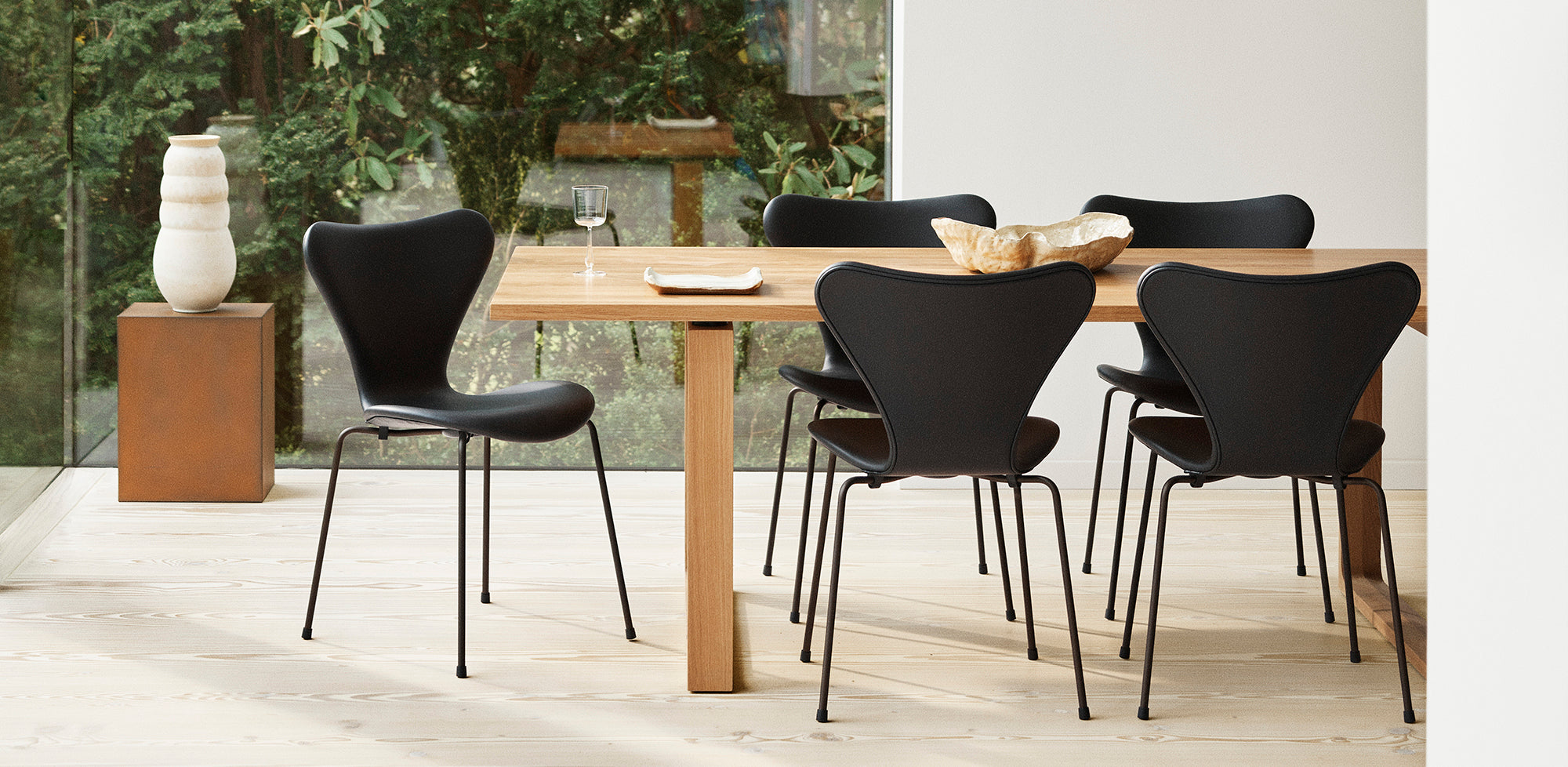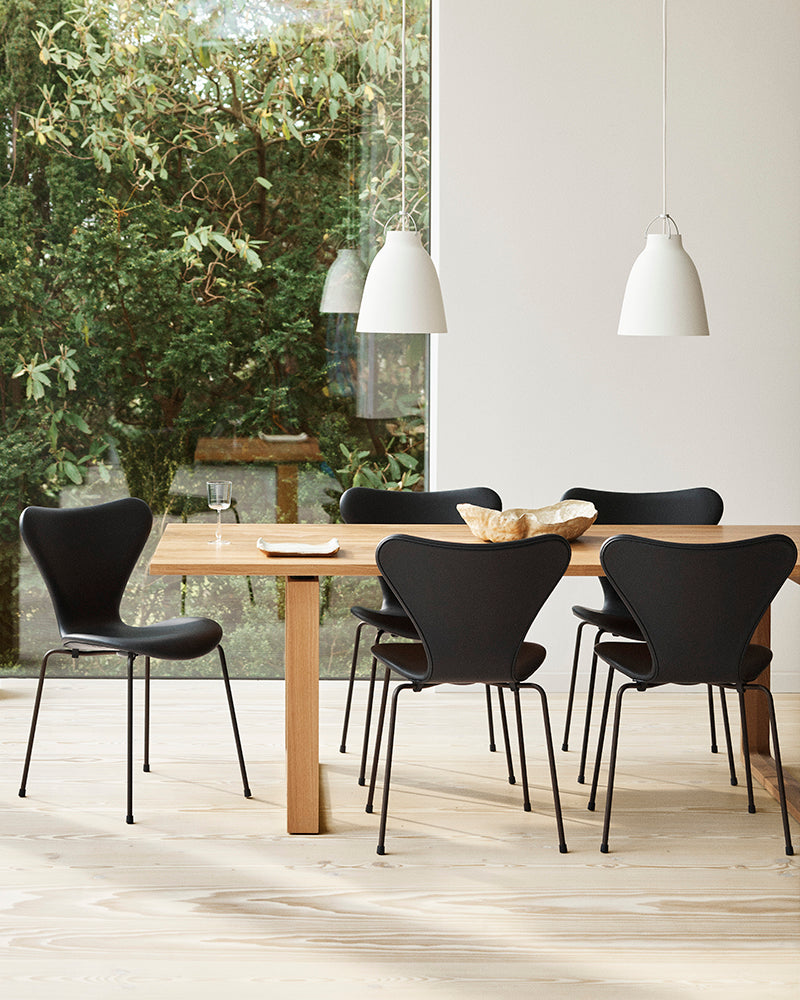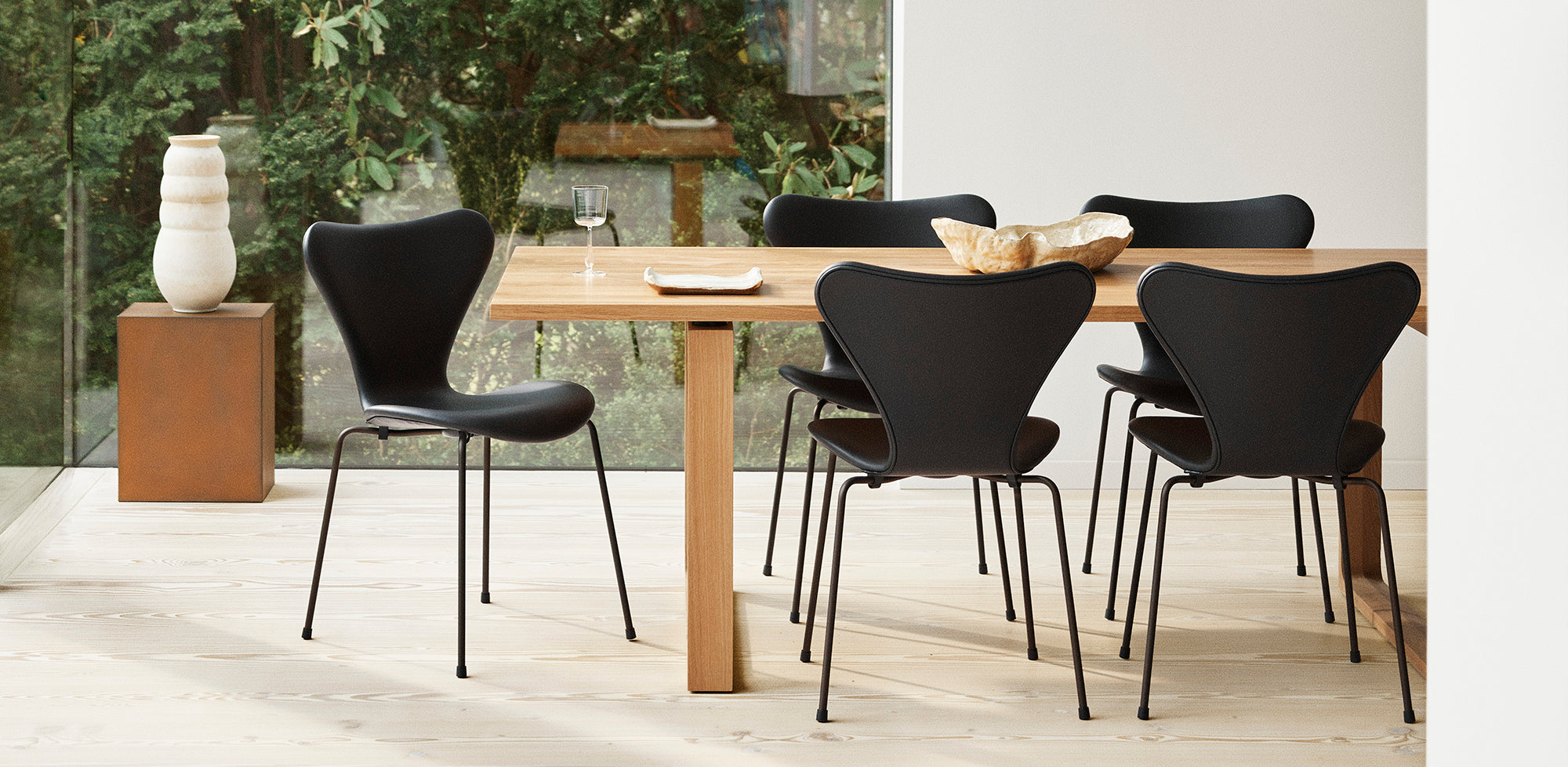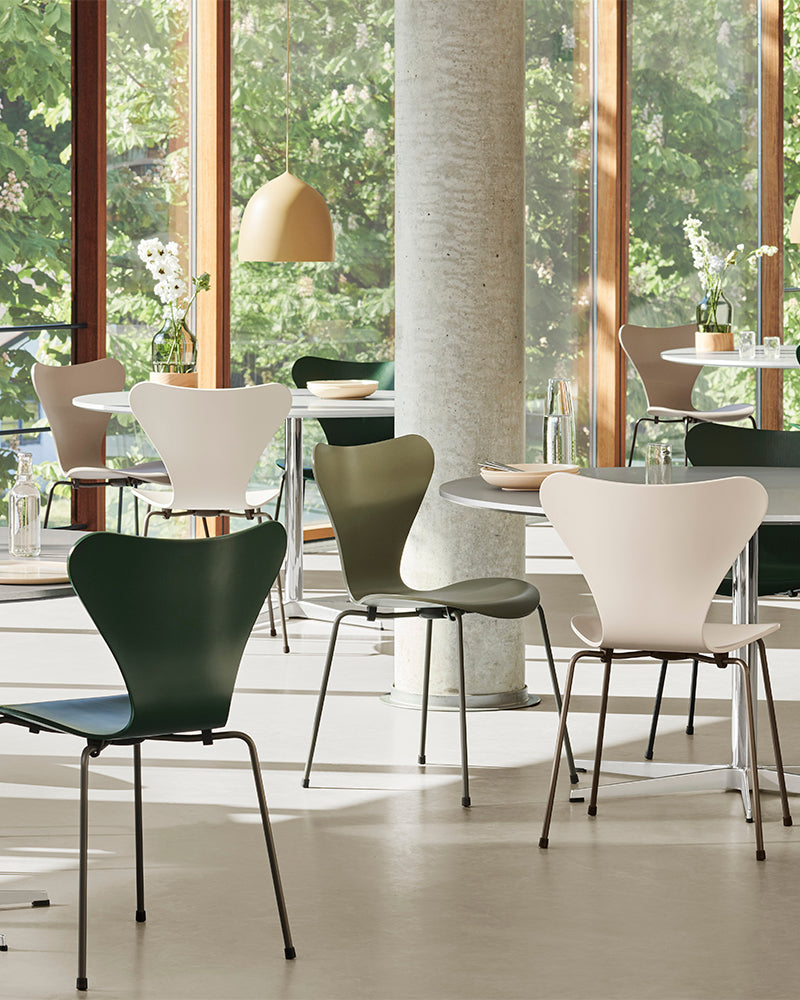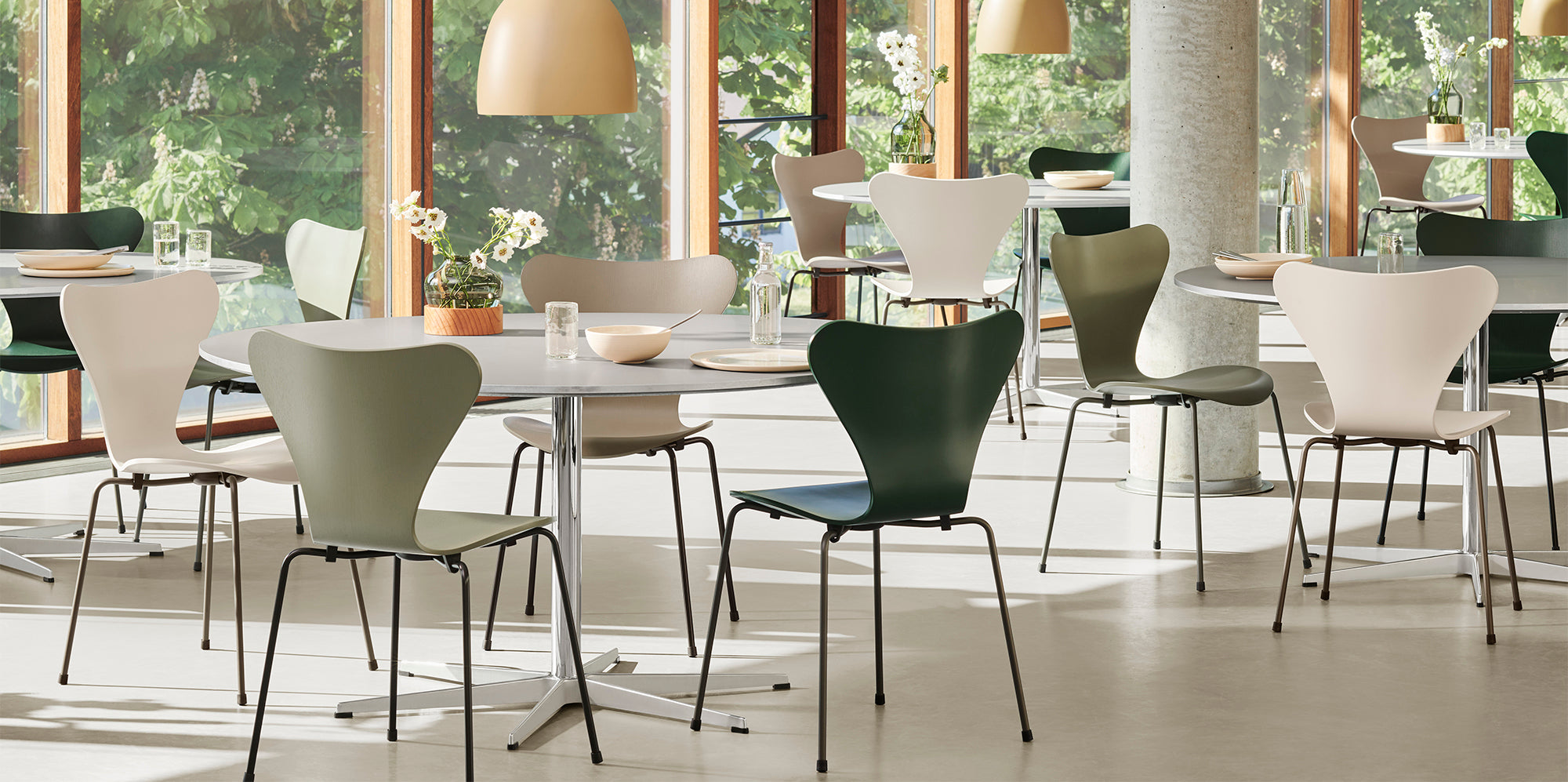Fritz Hansen Series 7 Chairs
Arne Jacobsen
The Series 7™ chair is an icon in modern furniture history, designed by Arne Jacobsen in 1955. Its unique shape is timeless and incredibly versatile, displaying character without overpowering the eye. The chair is made from 9 layers of pressure moulded veneer for strength, flexibility and durability despite its slender form. This is the most popular design within Fritz Hansen’s chair collection.
Models
3107: Chair w. tube legs (stackable up to 12 chairs*)
3207: Armchair w. tube legs
3117: Chair w. swivel base and castors
3217: Armchair w. swivel base and castors
3187: Counter stool w. tube legs
3197: Bar stool w. tube legs
* Upholstered chairs can be stacked with max. 6 pcs. with protection in between each chair.
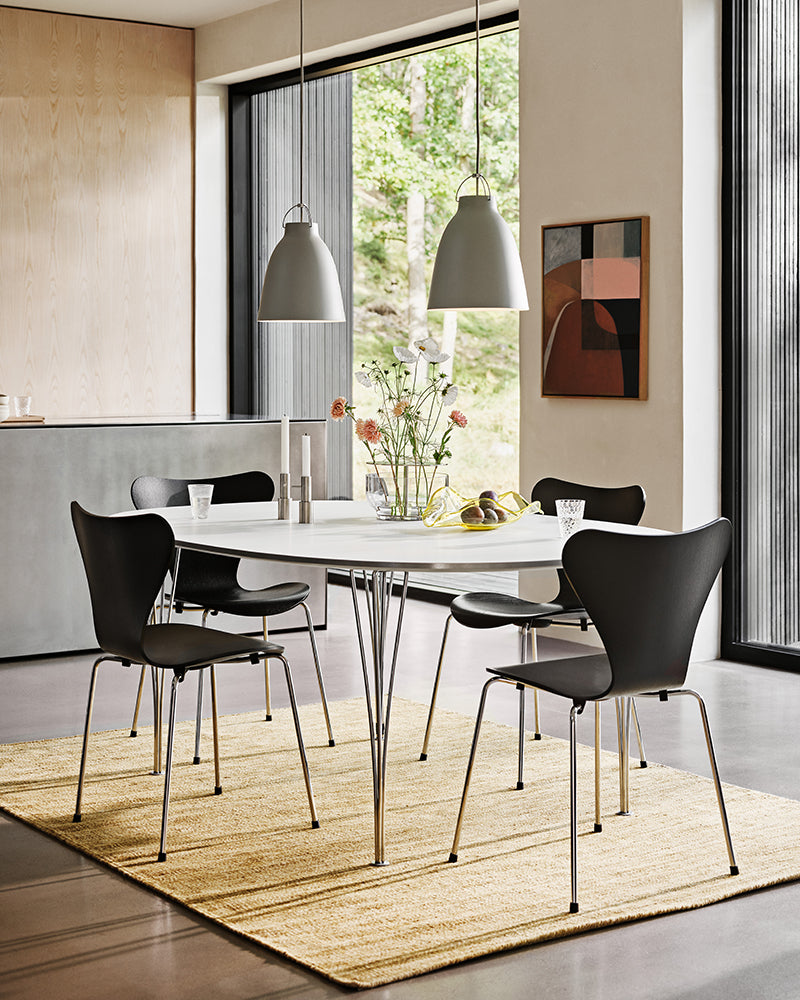
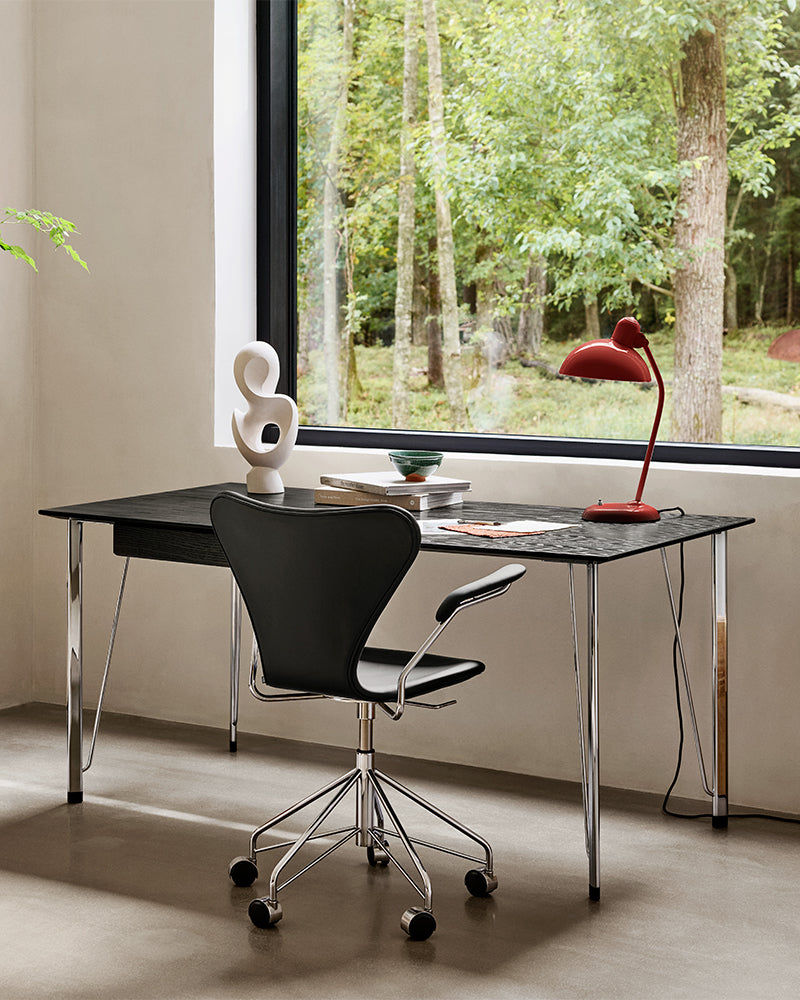

Materials
Shell: The shell of the Series 7™ chair is made of pressure moulded veneer - 7 layers of inner veneer and 2 layers of outer veneer on front and back. The inner veneer is always beech and the outer veneer is available in 10 different natural veneers. The chair is also available in two finishes: Coloured ash or Lacquered, in 16 different colours. All models are also available with front or full upholstery in textile or leather.
Base: The base for 3107, 3207, 3187 and 3197 is made of 14 mm steel tubes with 4 legs and leg ferrules of black synthetic material. The base is mounted with black support spacers and a black cover cap. The swivel base for 3117 and 3217 is made of 14 mm steel tubes and 5 hard-wheel castors with aluminium caps (soft wheels are also available). The bases are available in chromed steel or powder coated steel in 6 colours.
Model 3107 is available in 3 seat heights: 43/46/48 cm. The 3207 is available in 2 seat heights: 43/46 cm
Production Process
Shell: The shell is made of laminated, pressure moulded veneer - 9 layers in total. The 2 outer layers are made in veneer of different wood types, the 7 inner layers are made of beech. The veneer layers are glued together with water-based urea-formaldehyde glue. Un-upholstered chairs are coated with polyurethane lacquer, which prevents the emission of formaldehyde.
Upholstery: The shell is padded with polyurethane (PUR) foam. A water-soluble glue is used for bonding of upholstery to the foam and foam to the shell.
Base: The bases are made of chromed steel or powder coated steel. Fritz Hansen uses both trivalent chromium (Cr3) and hexavalent chromium (Cr6) for chromium plating. Fritz Hansen will convert to solely using trivalent chromium (Cr3) when the capacity in the Industry allows it.
Seat cushion: Made of HR foam or CMHR foam and upholstered with leather.

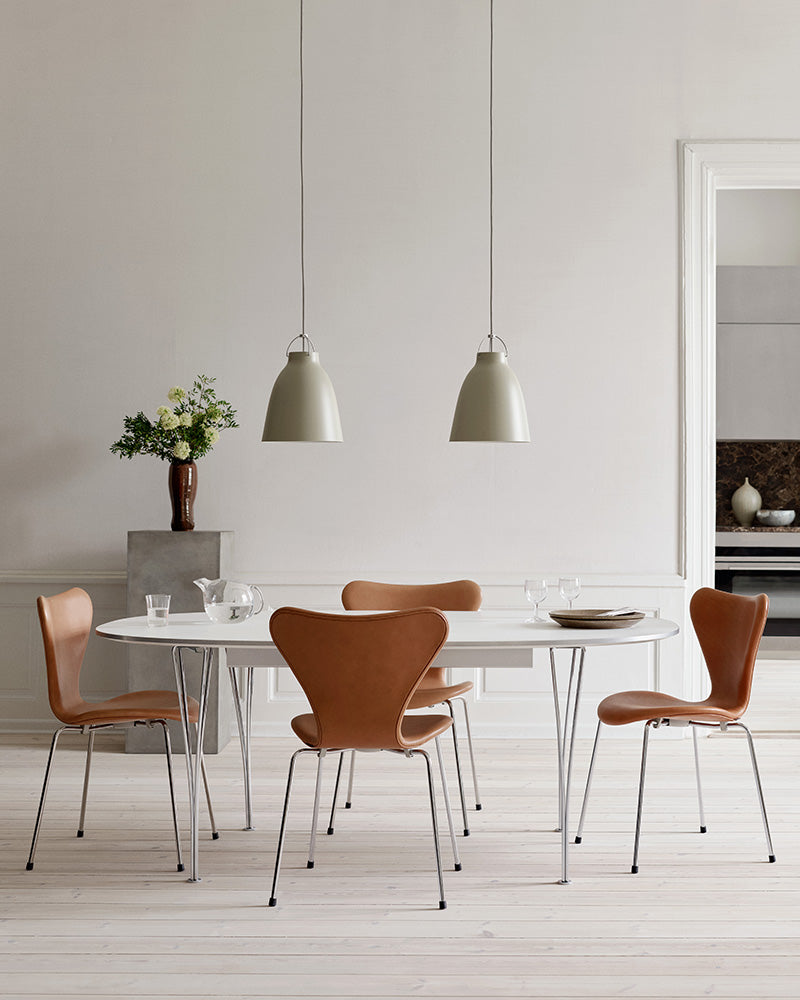

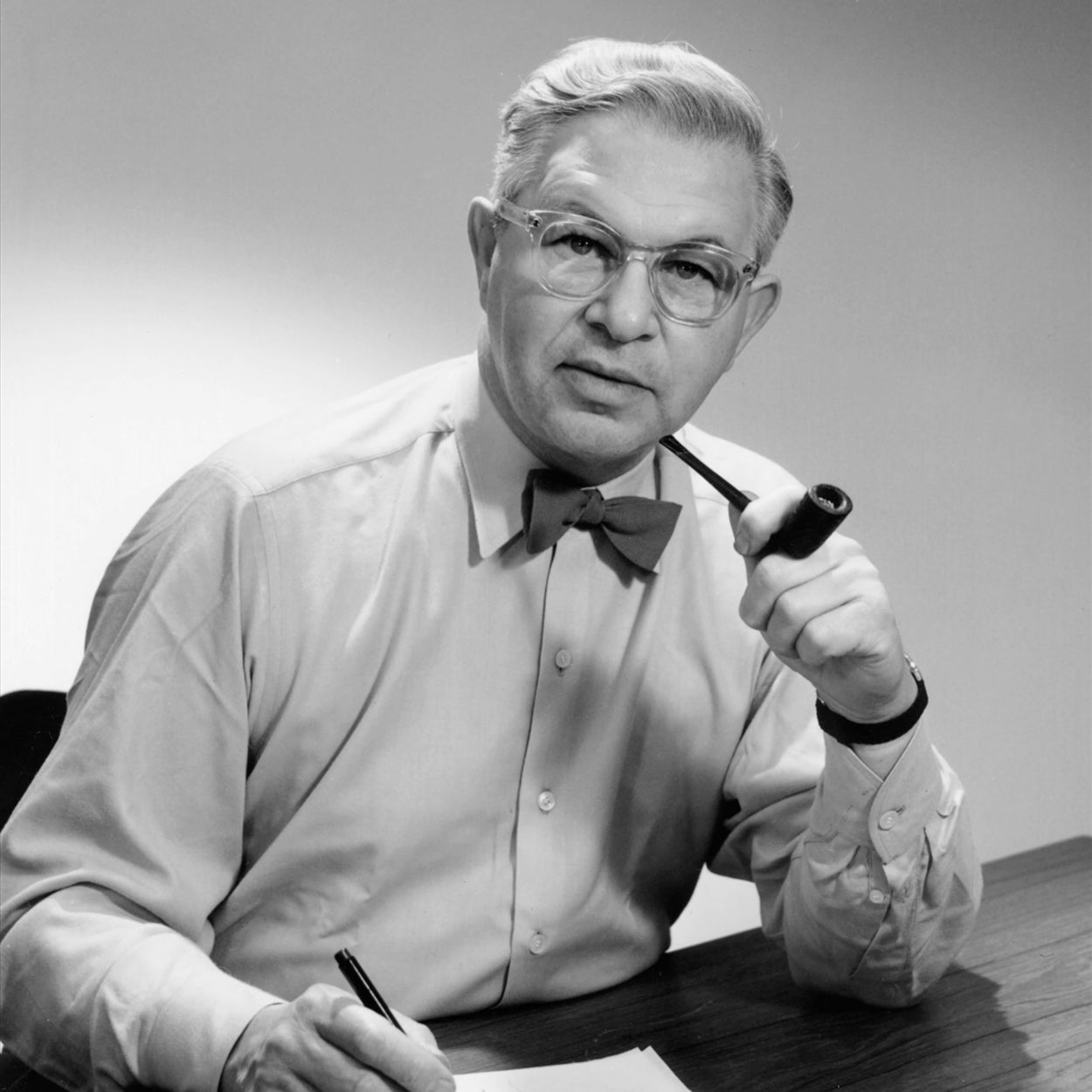
Arne Jacobsen
Jacobsen's architectural career began in the 1920s and evolved through several phases, including Functionalism and later his own interpretation of Modernism. Some of his notable architectural projects include:
- SAS Royal Hotel (now Radisson Collection Hotel), Copenhagen: Completed in 1960, this hotel is perhaps his most famous architectural work. Jacobsen not only designed the building but also the interior, furniture, and fixtures, showcasing his holistic approach to design.
- St. Catherine's College, Oxford: Designed and built in the 1960s, this college complex is a significant example of his modernist architectural style.
- National Bank of Denmark, Copenhagen: Jacobsens's last major work, he was able to see the first stage before his death in 1971. A meticulousy designed interior and a detailed garden, fit to house the coffers of the country.
